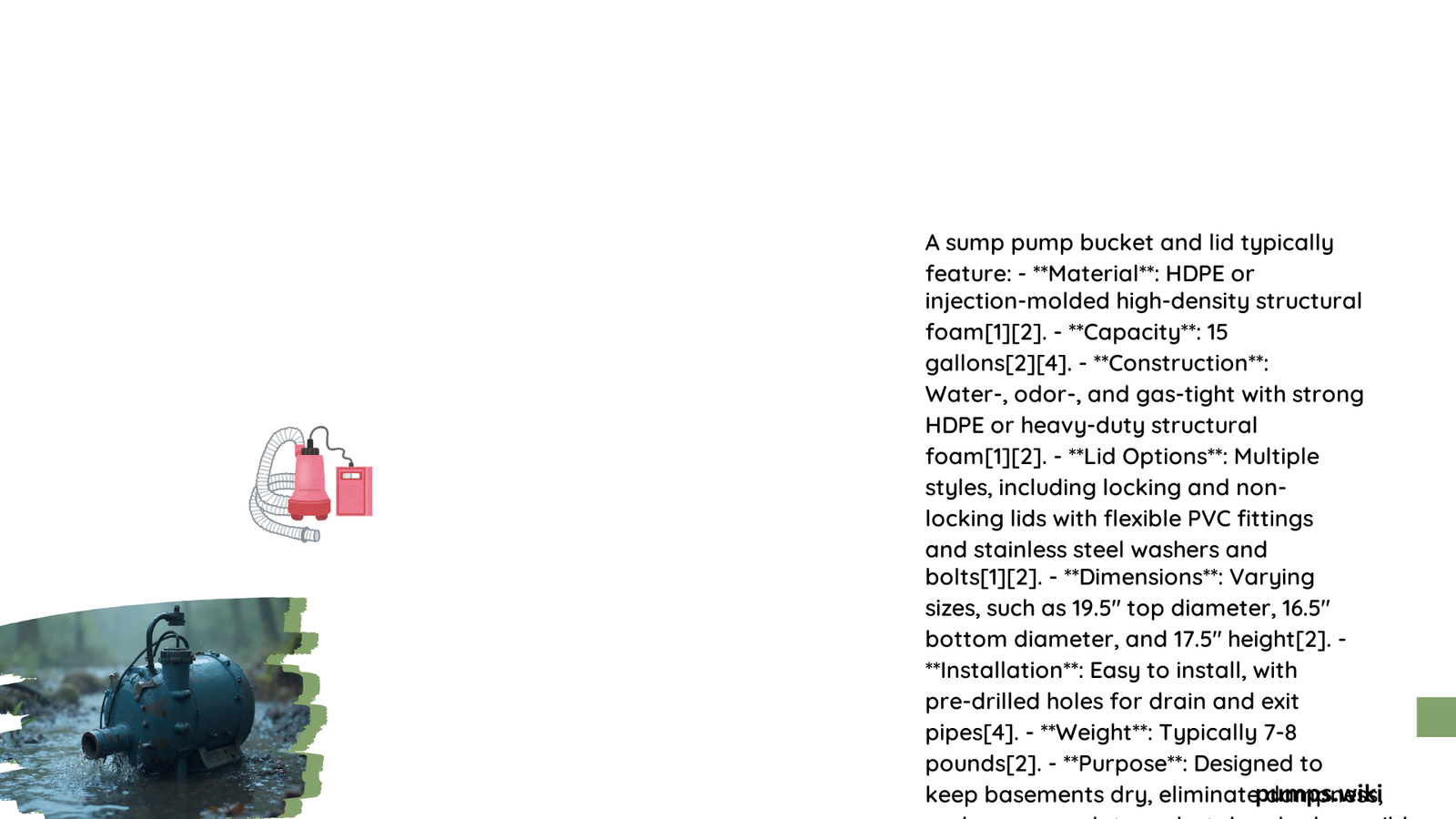Sump pump bucket and lid are critical components in basement water management systems, serving as the primary defense against potential flooding and moisture intrusion. These essential elements work together to collect, contain, and redirect groundwater away from your home’s foundation, preventing structural damage and maintaining a dry, safe living environment. Understanding their specifications, installation requirements, and maintenance protocols is crucial for homeowners seeking effective water control solutions.
What Are Standard Dimensions for Sump Pump Bucket?
Residential sump pump buckets typically range in size and configuration, with critical considerations for effective water management:
| Bucket Diameter | Depth Range | Water Capacity |
|---|---|---|
| 18 inches | 22-30 inches | Approximately 1 gallon per inch |
| 24 inches | 30-36 inches | Approximately 2 gallons per inch |
Key Factors in Bucket Selection
- Location Specificity: Choose a bucket matching your basement’s lowest point
- Water Table Considerations: Select size based on local groundwater conditions
- Drainage System Compatibility: Ensure proper connection with existing drain tiles
How Do You Properly Install a Sump Pump Bucket?

Installation requires meticulous planning and precise execution:
- Site Preparation
- Identify lowest basement point
- Clear area of debris
-
Ensure proper drainage slope
-
Excavation Process
- Dig hole slightly larger than bucket dimensions
- Create stable, level foundation
-
Allow adequate working space
-
Bucket Placement Techniques
- Center bucket in prepared location
- Connect perforated drainage pipes
- Ensure level positioning
What Materials Work Best for Sump Pump Lids?
Lid selection involves multiple critical considerations:
Recommended Materials
- High-density polyethylene
- Fiberglass reinforced plastic
- Corrosion-resistant composites
Performance Characteristics
- Watertight seal
- Radon gas prevention
- Durability against environmental stress
How Can You Prevent Water Intrusion?
Effective sealing techniques minimize potential water infiltration:
- Use high-quality gasket materials
- Apply professional-grade sealants
- Conduct regular inspection and maintenance
- Replace worn sealing components promptly
What Challenges Might Homeowners Encounter?
Potential issues include:
- Improper sizing leading to pump inefficiency
- Inadequate sealing causing water leakage
- Insufficient drainage pipe connections
- Frequent pump cycling due to oversized pit
Mitigation Strategies
- Professional consultation
- Regular system assessment
- Proactive maintenance schedule
Cost Considerations for Sump Pump Bucket and Lid
Average investment ranges:
– Basic system: $500 – $1,000
– Advanced configurations: $1,500 – $3,500
– Professional installation: Additional $300 – $800
Maintenance Recommendations
- Inspect seal integrity quarterly
- Clean bucket annually
- Check pump functionality every six months
- Replace worn components immediately
Expert Tips
- Use moisture-resistant lubricants
- Monitor drainage patterns
- Consider backup pump systems
Technical Specifications Checklist
✓ Proper bucket diameter
✓ Adequate depth
✓ Secure lid fitting
✓ Drainage pipe compatibility
✓ Pump horsepower matching pit size
References:
– Water Commander Sump Pit Guide
– High 5 Plumbing Sump Pump Insights
– Allied Plumbing Pump Size Guide
